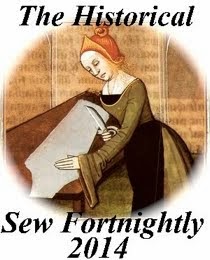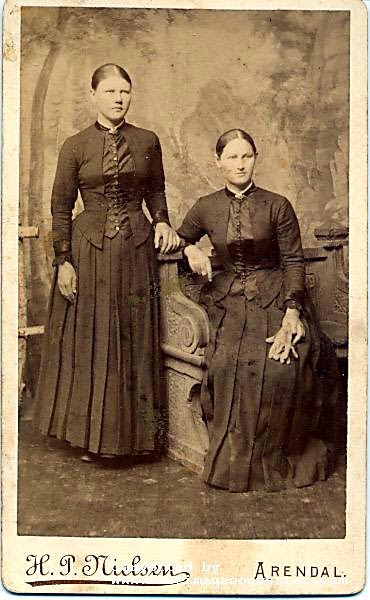 |
| Morris and Burne-Jones families. ca. 1874. |
Mrs. Mary Haweis, an American reformer, wrote that dress is an art object in itself; she argued that no “imbecile ornament” should be worn, because it is artificial, and came up with Seven Dress Rules:
1. retain the human form under all circumstances.
2. allow the human form to determine the folds and trimmings.
3. see that the proportions of the dress obey the proportions of the body.
4. allow the dress to reasonably express the character of the wearer.
5. consider the fitness of times and seasons.
6. avoid discomfort, and weight sufficient to cramp and disable either really or apparently.
7. avoid colors too pure, or brilliant enough to overpower the features of the face.
In following these dictates, Pre-Raphaelite dresses had high jewel necklines, loose Bishop style sleeves that were set into the bodice at the shoulder line (instead of dropped on to the top of the arm as in contemporary fashion), loosely-fitted or un-fitted waistlines (because the dress was worn without a corset underneath), with long, full skirts worn without hoops, bustle, or multiple petticoats so that they fell in heavy folds and swept the ground. They were untrimmed except with “Medieval” embroidery, large free-form embroidered sunflowers, daffodils or other organic forms, or smocking, functional buttons or belts, or perhaps a single ruffle near the hem, in contrast to the ruffled, ribboned, lace-covered, fringed, and otherwise heavily-decorated mainstream fashion.
 |
| "The Blue Silk Dress" by D.G. Rossetti. 1868. |
Shoes appear to be almost entirely flat or with low heels, but the length of the gowns' hems makes it almost impossible to see what the rest of the shoes or slippers looked like! Instead of multiple pieces of jewelry, the Pre-Raphaelite women confined themselves to a single strand of beads, especially natural amber, or Oriental-inspired pieces. Single pendants, or maybe a pair of plain gold bracelets, or a single "artistic" brooch were worn in many period photographs. Pre-Raphaelite women also were not shown in the fashionable bonnets and caps of the day, although certain "antique" forms -- like the Conquistador helmet -- were adapted for bonnets and hats, as shown in some contemporary illustrations. They appear most often with only flowers in their hair, or perhaps a delicate metal circlet over the forehead, decorated with natural forms like a wreath.
 |
| "Picking Apple Blossoms" by Millais. 1856. |
To be continued ...
 |
| "La Ghirlandata" by D. G. Rossetti. |
For more information:
“The Aesthetic Dress Movement: Fashion History of Aesthetics” by Pauline Weston Thomas for Fashion-Era.com
“Morgan Le Fay”
The Pre-Raphaelite Online Resource
“Pre-Raphaelite Ideals and Artistic Dress” by Consuelo Marie Rockliff-Stein
“Artistic Flair – Aesthetic Dress of the 1880s”
“Aesthetic Dress” Clothing and Fashion Encyclopedia
Reforming Women’s Fashion, 1850 – 1920: Politics, Health, and Art by Patricia A. Cunningham.





















No comments:
Post a Comment